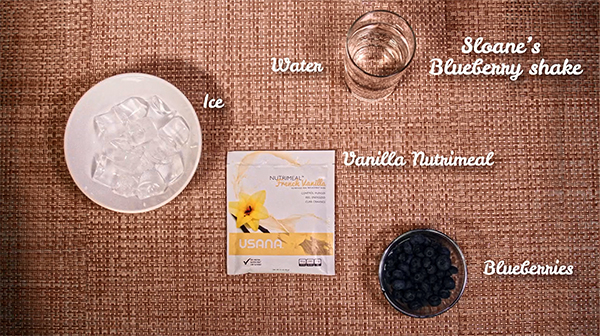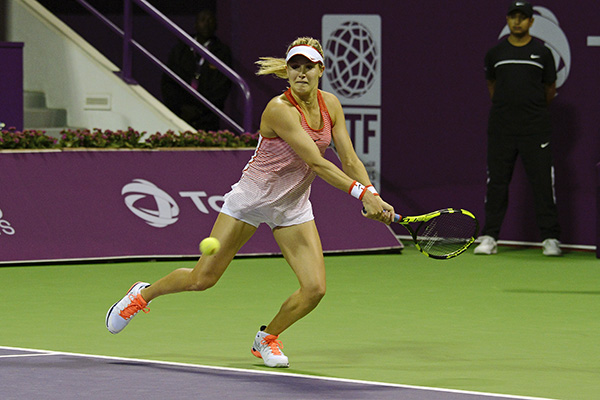– Roberta Vinci ends the seed drought: On the day she makes her top 10 debut, No.9 seed Vinci snags the first win for a seed in the Middle East this year, beating Lesia Tsurenko 6-2, 6-1 in the first round of the Qatar Total Open.
– Eight is not enough: 18-year-old Ana Konjuh saved eight match points against No.13 seed Caroline Wozniacki, but eventually lost 4-6, 6-3, 7-5 in Doha. It was a much needed win for Wozniacki, who fell out of the Top 20 on Monday. She plays Daria Gavrilova in the second round.
– Rankings news in Doha: A few notes on what’s at stake in Doha (read our full preview here):
– Angelique Kerber will remain at No.2 unless Agnieszka Radwanska wins the title.
– Simona Halep and Garbiñe Muguruza need to advance to the final for a chance to move to No.3.
– Muguruza will overtake Halep if she finishes one round better.
– Maria Sharapova will be at No.6 unless Belinda Bencic makes the quarterfinal, Petra Kvitova makes the QF, Vinci makes the semifinal, or Carla Suárez Navarro makes the final.
– Defending champion Lucie Safarova needs to make the final for a chance to get back into the Top 10.
– Caroline Wozniacki needs to make the final for a chance to return to the Top 20.
– Dark horse doubles: Could Elena Vesnina and Daria Kasatkina be a dark horse doubles team for Russia in Rio? Vesnina has not been playing doubles with Ekaterina Makarova and has paired up with Kasatkina with good success over the last few months. Keep an eye on them.
– Who’s on first?: Here’s a confusing, but ultimately telling exchange between Wozniacki and a reporter in Doha:
Q. If the world ends tomorrow, what tennis match would you chose, to play or to see?
CAROLINE WOZNIACKI: If I had to choose a match.
Q. To play or to see a tennis match?
CAROLINE WOZNIACKI: To play.
Q. Who?
CAROLINE WOZNIACKI: Who?
Q. Yeah.
CAROLINE WOZNIACKI: What game I would like to play?
Q. Yeah.
CAROLINE WOZNIACKI: The US Open finals.
Q. Against?
CAROLINE WOZNIACKI: Someone I beat. So if I win, I don’t care who I play against. Doesn’t matter.
– Tricky conditions in Doha: Here’s how Vinci saw it after her opening round win: “So windy. The court is little bit strange. Sometimes it’s fast. Sometimes it’s slow. Completely different than Dubai the last week.”

– How “open” is “open”?: Agnieszka Radwanska was asked about the perceived parity in the women’s game right now. “Of course Serena is always there, especially last year, but other years totally different,” Radwanska said in Doha. “She’s definitely dominating if she’s on fire. When she’s playing her best tennis, she just playing unbelievable and too good, but otherwise it’s open.”
– Radwanska and Halep planning for Fed Cup: Both women told reporters in Doha that they were planning to play in their respective April ties in hopes of keeping their countries in World Group I. Halep’s Romanian side takes on Germany at home. “Yeah, I can say 50/50,” Halep said, when asked to handicap the tie, before joking “And 51 for us.”
– Experience matters: Garbiñe Muguruza has been very conscious of the perils of early success. Just weeks after making he first Slam final at Wimbledon last year, she was already telling me how worried she was about a let-down. Six months later, you can still tell it’s on her mind.
“I don’t think there’s an age to reach the top,” she said in Doha. “I think it’s great when you’re playing good. But being young and also having success, it can be very good and it can be very bad.
“We’ve seen some cases, you’re young and you’re like, I’m playing good, I’m doing a lot of things. But it’s also hard because you’re not as mature. Like Angelique Kerber said, she can maybe handle more or she’s used to more.
“It’s a very thin line there keeping that balance. With time, you can deal better with that.”
– Steve Tignor for Tennis.com on last week’s “Decimation in Dubai.”
Where some see chaos, we see an opportunity to watch lesser-known favorites get a shot at a title and gain some momentum. To me, Strycova, with her mix of melodrama and resourcefulness, is an underrated entertainer; maybe she can build on this run. If you’re interested enough, there’s always a storyline to follow.
On balance, I find upsets exciting, and I like a tour where rank-and-file players aren’t scared to challenge the elite. But I also like to see an elite. The two losses in Dubai that were dispiriting were those of Halep and Muguruza.
– Bustle.com has a nice look back on how women’s tennis has changed through the years.
– Victoria Azarenka’s dispatch for SI.com on the Super Bowl and understanding the pressures of being an elite athlete.
– Tweet of the Week: It’s still early, but this exchange between Andrea Hlavackova and Jiri Fencl (coach of Hlavackova’s doubles partner Lucie Hradecka) was wonderful:





